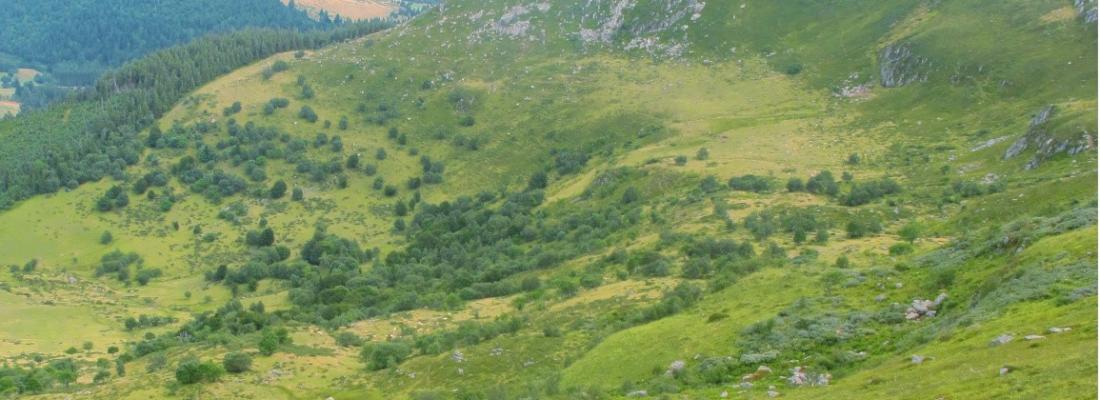Biodiversity Reading time 4 min
Second-growth forests, restoring ecosystems and contributing to people’s well-being
Published on 20 January 2021

The ERA-NET BiodivERsA3 project “Unravelling the potential of spontaneous forest establishment for improving ecosystem functions and services in dynamic landscapes” (SPONFOREST) focused on three main questions: How do secondary forests become established? How does the process affect the forests’ character and functioning? What ecosystem services do they provide, and how do local populations and policymakers perceive and manage them?
Second-growth forests: complex growth mechanisms that enhance biodiversity
The researchers documented that secondary forest growth mechanisms are deeply complex and largely dependent on the context. Their results show that spontaneous regrowth favours forest habitat connectivity, and does not cause a loss of habitat diversity in European landscapes. New forests are characterised by rapid tree growth, which tends to make them particularly effective carbon sinks. Compared to older forests, these new habitats show comparable, if not greater, levels of drought resistance. Moreover, the “wild” nature of unmanaged second-growth forests—with different tree ages and unsystematic exploitation—could help enhance their resistance to warmer and drier climates.
The diversity and heterogeneity found in such forests promote the diversity of some organisms such as woody plants and insect herbivores in fragmented landscapes, whereas others such as ectomycorrhizae take more time in establishing species-rich communities. (1, 2)
What ecosystem services do second-growth forests provide, and how are they perceived?
The researchers evaluated different goods and services derived from the establishment of second-growth forests in four case studies presenting contrasting ecological and societal contexts: two landscapes located in rural areas undergoing rural exodus, and, the other two, in peri-urban areas with intense land use. The team was able to estimate changes in regard to material goods (energy and genetic resources), regulation processes (pollination, climate regulation, and biological processes) and non-material services (learning and inspiration, physical and psychological experiences, and supporting identities). (3)
Their results show that spontaneous forest regrowth generally implies greater climate regulation and energy provision, while its non-material contributions are strongly context-dependent. Local populations have discordant perceptions about new forests: rather negative in rural areas, and more positive in peri-urban areas. A symbol of lost landscapes and traditional lifestyles for some, for others, these habitats represent an opportunity for forest management and nature conservation.
The researchers believe that it is necessary to carefully address the different perceptions of competing land uses in order to enhance forest multifunctionality and sustainability. To achieve this, management methods must optimise the services provided to local populations, especially in rural areas, where traditional agricultural activities are considered an important part of the local heritage.
These results are crucial to achieve the sustainable management of new forests, restore ecosystem functioning and increase nature’s contributions to people, while still attaining environmental policy objectives. More information on the results obtained by SPONFOREST and their implications can be found in a policy brief edited by BiodivERsA. (4)
|
References (open access publications): 1) Editorial to a special issue of the Annals of Forest Science: Hampe A, Alfaro-Sánchez R, Martín-Forés I (2020) Establishment of second-growth forests in human landscapes: ecological mechanisms and genetic consequences. Ann For Sci 77 : 87. https://doi.org/10.1007/s13595-020-00993-7 2) Editorial to a special issue of the Journal of Applied Ecology: Garcia C, Espelta JM, Hampe A (2020) Managing forest regeneration and expansion at a time of unprecedented global change. J Appl Ecol, 57, 2310-2315. https://doi.org/10.1111/1365-2664.13797 3) Martín‐Forés I, Magro S, Bravo‐Oviedo A, Alfaro‐Sánchez R, Espelta JM, Frei T, Valdés‐Correcher E, Rodríguez Fernández‐Blanco C, Winkel G, Gerzabek G, González‐Martínez SC, Hape A; Valladares F (2020) Spontaneous forest regrowth in South‐West Europe: Consequences for nature's contributions to people. People and Nature 2: 980-994. 4) Policy brief "How natural forest expansion in Europe can offer cost-effective benefits to people" edited by BiodivERsA based on the results from SPONFOREST. https://www.biodiversa.org/1842 |
